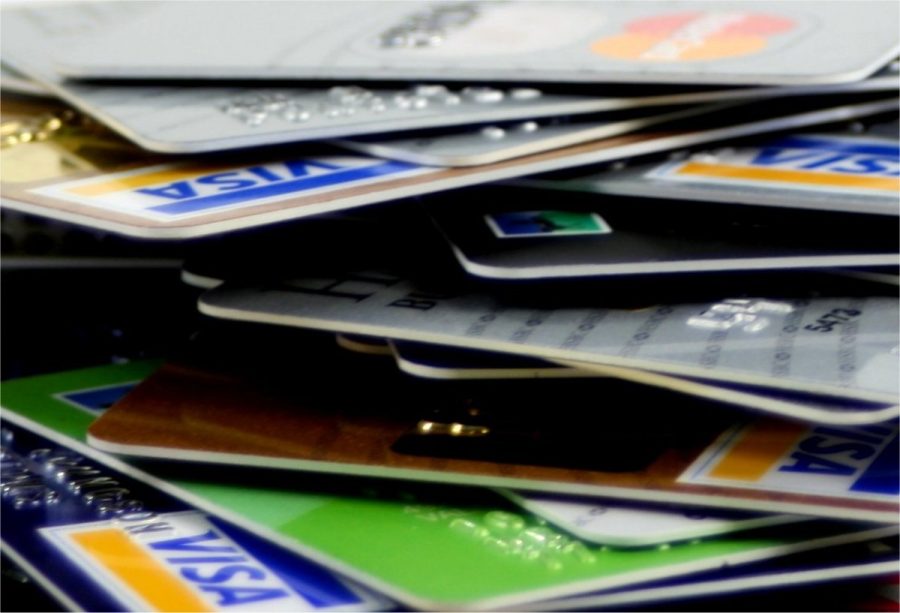Credit card debt surpasses savings for Americans, report shows
Nick Youngson | Alpha Stock Images
March 13, 2023
Bankrate revealed that credit card debt is becoming a growing issue for Americans and impacting their ability to save for unexpected expenses, according to the company’s annual emergency savings report on Feb. 23.
Recent data by the prominent consumer financial services company suggested that the percentage of people with credit card debt is on the rise, as more than a third of the U.S. population now has more credit card debt than emergency savings.
Additionally, 22% of people surveyed reported more credit card debt in January 2022 than at the same time the previous year.
Although this is still lower than the 28% of people who possessed more credit card debt in January 2020, before the COVID-19 pandemic hit the United States, it is still alarming.
The findings signaled a growing concern regarding management of personal finances and the need for individuals to be more active in terms of saving their money.
Unfortunately, the situation seems to be worse for Gen Xers. A staggering 44% of the age group have more credit card debt than savings in 2023, up from 24% in 2022.
In uncertain economic times, it is crucial to prioritize paying down debt quickly while building up emergency savings. This approach can provide a safety net against any loss of income, which is especially important during economic hardship.
But, rising interest rates are making it challenging for people to save, with 48% of adults in the United States reporting that they are saving less as a result.
It is crucial to go for high-yield savings accounts, as they are currently offering the biggest yields since 2008, presenting an opportunity to start saving.
“Consumers should make hay while the sun shines,” Bankrate Chief Financial Analyst Greg McBride said, according to Banco Santander SA’s Prosper and Thrive microsite. “Now is the time, with unemployment low and wages rising, to right-size the equation by paying off high-cost credit card debt and adding to emergency savings.”
The inflation rate caused people to save less and accumulate more credit card debt. Some households may be on the brink of financial collapse.
As a result, some people might turn to credit lines to pay for essential items such as groceries or gas. As interest rates increase, it becomes increasingly difficult to repay debt balances, making it even more difficult for people to manage their finances.
Bankrate’s survey found 45% of millennials, 44% of Gen Xers and 38% of Gen Zers have more credit card debt than money in savings. In comparison, only 25% of baby boomers said the same.
The absence of emergency savings is particularly alarming in light of the escalating prices of consumer staples, such as gasoline and eggs, in addition to the likelihood of an economic downturn.
The Federal Reserve Bank of New York reported a credit card debt of $986 billion, which suggests that consumers are experiencing significant financial strain.
The inflationary trend caused savings to dwindle and credit card debt to increase, and there are indications that households may be approaching a critical point under mounting financial stress.
While low unemployment rates have helped consumers maintain their financial stability in the past, the persistently high prices and rising interest rates might be challenging some borrowers’ capacity to repay their loans.
Another sign that consumers are feeling the financial pinch is that the New York Fed’s reported credit card debt is a record high.
“Credit card balances grew robustly in the 4th quarter, while mortgage and auto loan balances grew at a more moderate pace, reflecting activity consistent with pre-pandemic levels,” Wilbert van der Klaauw, economic research advisor at the New York Fed, said in a press release.
As the world grapples with the economic uncertainty brought about by the pandemic, inflation and high interest rates, consumers should be more cautious about their finances and make smart decisions to secure our financial future.
Experts from Fidelity National Financial Inc. recommend establishing a savings account, setting aside an amount equivalent to three-to-six-months’ worth of expenses and developing a savings plan as effective measures to increase savings.
By doing so, individuals may manage their financial future and become better equipped to handle any potential economic hardships.








